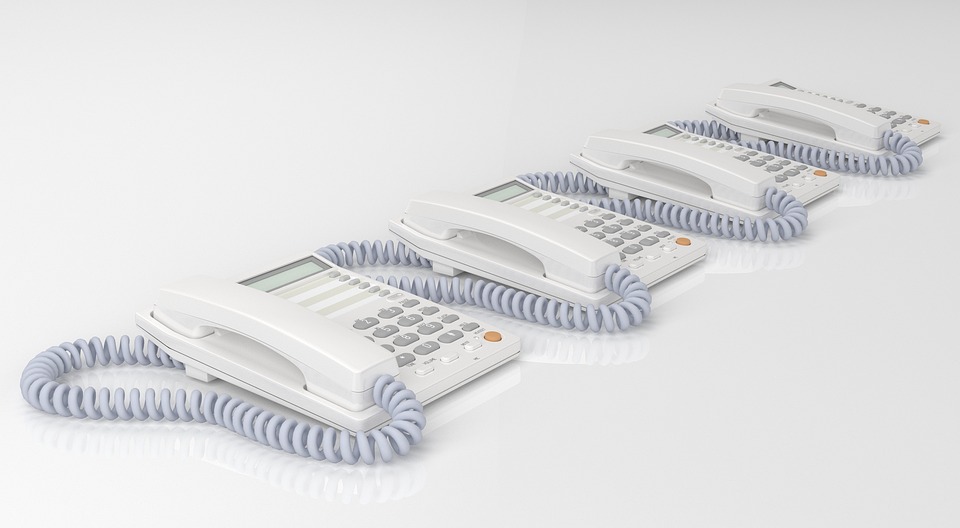Organizational Culture
Creating a High-Performing Team Culture: The Role of Recognition and Rewards

Why High-Performing Teams Matter
In today’s fast-paced and competitive business landscape, having a high-performing team is crucial for success. A high-performing team is not just about meeting targets, it’s about driving innovation, improving customer satisfaction, and outperforming the competition. In this article, we’ll explore the role of recognition and rewards in creating a high-performing team culture.
What is a High-Performing Team Culture?
A high-performing team culture is characterized by a group of individuals who share a common goal, work together towards achieving it, and recognize and reward each other’s efforts. This culture fosters a sense of belonging, motivation, and commitment, leading to improved job satisfaction, reduced turnover, and increased productivity.
The Role of Recognition and Rewards
Recognition and rewards are essential components of a high-performing team culture. Recognizing and rewarding individual and team achievements motivates employees to strive for excellence, boosts morale, and encourages collaboration. Here are some ways to recognize and reward your team:
### Public Recognition
* Celebrate individual and team achievements through public recognition, such as team meetings, awards, or company-wide announcements.
* Share success stories and achievements on internal communication channels, such as newsletters or intranet sites.
* Recognize employees’ work anniversaries, milestones, and significant career events.
### Monetary Rewards
* Offer bonuses, commissions, or profit-sharing opportunities for meeting or exceeding targets.
* Provide incentives, such as extra time off, flexible work arrangements, or professional development opportunities.
* Offer stock options or equity to align employees’ interests with the company’s goals.
### Non-Monetary Rewards
* Offer opportunities for professional development, training, and mentorship.
* Provide access to state-of-the-art equipment, software, or tools.
* Recognize employees’ work-life balance by offering flexible scheduling or telecommuting options.
Best Practices for Implementing Recognition and Rewards
To make recognition and rewards effective, follow these best practices:
### 1. Clearly Define Expectations
* Establish clear goals, targets, and expectations for individual and team performance.
* Communicate these expectations to all employees and ensure everyone understands their role in achieving them.
### 2. Be Timely and Consistent
* Recognize and reward employees promptly after their achievements.
* Use a consistent and fair criteria for recognition and reward distribution.
### 3. Make it Meaningful
* Personalize recognition and rewards to individual employees’ needs and interests.
* Ensure rewards are relevant to the achievement being recognized.
### 4. Lead by Example
* Demonstrate the behavior and values you expect from your team.
* Recognize and reward your own achievements and those of your team members.
Conclusion
Creating a high-performing team culture requires a thoughtful approach to recognition and rewards. By implementing a well-structured recognition and reward program, you’ll motivate your team to strive for excellence, improve job satisfaction, and drive business success. Remember to clearly define expectations, be timely and consistent, make it meaningful, and lead by example.
FAQs
Q: How often should I recognize and reward my team?
A: Recognize and reward your team regularly, whether it’s daily, weekly, or monthly, depending on your team’s performance and needs.
Q: What are some creative ways to recognize and reward my team?
A: Some creative ways to recognize and reward your team include team outings, celebrations, or events, or offering unique experiences, such as tickets to a sporting event or a concert.
Q: How do I balance recognition and rewards with performance expectations?
A: Balance recognition and rewards with performance expectations by setting clear goals and expectations, providing regular feedback, and offering opportunities for growth and development.
Q: Can recognition and rewards be used to motivate all team members, regardless of their role or position?
A: Yes, recognition and rewards can be used to motivate all team members, regardless of their role or position, by acknowledging and celebrating their contributions and achievements.
Organizational Culture
The Future of Work: How Collaboration Tools Are Preparing Us for a Post-Pandemic World

Introduction
The COVID-19 pandemic has brought about unprecedented changes in the way we work, with many organizations forced to adopt remote working arrangements to maintain business continuity. As we look to the future, it’s clear that the traditional office setup is no longer the only option. In this article, we’ll explore how collaboration tools are enabling a new era of work, one that’s more flexible, more agile, and more connected than ever before.
The Challenges of Remote Work
While remote work has its benefits, it also presents several challenges. For one, it can be difficult to maintain a sense of community and connection with colleagues when you’re not physically present. Additionally, remote workers may feel isolated and disconnected from the team, which can lead to decreased productivity and morale.
The Importance of Real-Time Communication
Real-time communication is critical in a remote work environment. It allows team members to stay connected, share ideas, and work together seamlessly. This is where collaboration tools come in, providing a platform for real-time communication, collaboration, and project management.
The Rise of Collaboration Tools
Collaboration tools have been around for a while, but their popularity has surged in recent years. According to a recent survey, 85% of employees use collaboration tools to get work done, and 71% of employees believe that collaboration tools have improved their work experience.
Key Features of Collaboration Tools
So, what makes a good collaboration tool? Here are some key features to look out for:
- Real-time communication: Enables team members to chat, video conference, and share files in real-time.
- Project management: Allows teams to plan, organize, and track projects from start to finish.
- File sharing: Enables teams to share files, documents, and other materials securely and easily.
- Task management: Helps teams assign, track, and complete tasks efficiently.
Benefits of Collaboration Tools
So, what are the benefits of using collaboration tools? Here are a few:
- Improved communication: Collaboration tools foster real-time communication, reducing misunderstandings and miscommunications.
- Increased productivity: By streamlining workflows and automating repetitive tasks, collaboration tools can help teams work more efficiently.
- Enhanced collaboration: Collaboration tools make it easier for teams to work together, share ideas, and build consensus.
- Better project management: Collaboration tools provide a single platform for project management, reducing the risk of errors and miscommunication.
The Future of Work
As we look to the future, it’s clear that the traditional office setup is no longer the only option. With the rise of remote work, the importance of real-time communication, and the benefits of collaboration tools, it’s clear that the future of work is all about flexibility, agility, and connection.
Conclusion
In conclusion, collaboration tools are playing a critical role in shaping the future of work. By providing a platform for real-time communication, collaboration, and project management, these tools are enabling teams to work more efficiently, more effectively, and more connected than ever before. As we look to the future, it’s clear that the traditional office setup is no longer the only option. The future of work is all about flexibility, agility, and connection, and collaboration tools are leading the way.
FAQs
Q: What are the benefits of using collaboration tools?
A: Collaboration tools can improve communication, increase productivity, enhance collaboration, and better project management.
Q: What are the key features of collaboration tools?
A: Key features include real-time communication, project management, file sharing, and task management.
Q: How do collaboration tools help with remote work?
A: Collaboration tools help with remote work by providing a platform for real-time communication, collaboration, and project management, reducing the challenges of remote work.
Q: What is the future of work looking like?
A: The future of work is looking like a more flexible, agile, and connected era, with collaboration tools playing a critical role in shaping this new era of work.
Organizational Culture
Building Trust in a Fast-Paced Environment: Strategies for Tech and Startups

Building team trust is crucial in today’s fast-paced environment, where speed and agility are key to success. In this article, we’ll explore the importance of building trust in tech and startups, and provide strategies for achieving it.
Why Building Trust Matters in Tech and Startups
In the tech and startup world, trust is often the foundation upon which successful projects are built. When team members trust each other, they can work more effectively together, share knowledge and expertise, and make decisions quickly. Without trust, collaboration can be strained, and projects may stall or even fail.
The Challenges of Building Trust in a Fast-Paced Environment
Building trust in a fast-paced environment can be challenging, especially in tech and startups where priorities are constantly shifting. With tight deadlines, limited resources, and a high demand for results, it’s easy for team members to feel overwhelmed and stressed. This can lead to a lack of trust and communication breakdowns.
Strategies for Building Trust in a Fast-Paced Environment
So, how can you build trust in a fast-paced environment? Here are some strategies to help you achieve it:
Communicate Effectively
Effective communication is key to building trust. Make sure to communicate clearly, concisely, and regularly with your team. This includes setting clear expectations, providing regular updates, and being open to feedback and questions.
Be Transparent and Accountable
Transparency and accountability are essential for building trust. Be open about your goals, strategies, and challenges. Take ownership of your actions and be willing to admit when you’re wrong. This will help your team feel more secure and confident in your leadership.
Lead by Example
As a leader, it’s crucial to lead by example. Demonstrate the behavior and work ethic you expect from your team. Show that you’re committed to your goals and willing to work hard to achieve them.
Foster a Culture of Trust
A culture of trust is essential for building trust. Encourage collaboration, open communication, and a sense of community among your team. Celebrate successes, provide feedback and coaching, and recognize individual contributions.
Embrace Feedback and Constructive Criticism
Embracing feedback and constructive criticism is vital for building trust. Encourage your team to share their thoughts, ideas, and concerns. Be open to feedback and use it to improve your leadership and decision-making.
Conclusion
Building trust in a fast-paced environment is crucial for success in tech and startups. By communicating effectively, being transparent and accountable, leading by example, fostering a culture of trust, and embracing feedback and constructive criticism, you can build a strong foundation for trust and collaboration. Remember, trust is a two-way street – it requires effort and commitment from both leaders and team members. By working together, you can achieve great things and build a successful, trust-based team.
FAQs
Q: How can I build trust with my team in a fast-paced environment?
A: Building trust in a fast-paced environment requires effective communication, transparency, and accountability. Lead by example, foster a culture of trust, and embrace feedback and constructive criticism.
Q: What are the benefits of building trust in a fast-paced environment?
A: Building trust in a fast-paced environment can lead to increased collaboration, improved communication, and a sense of community among team members. It can also improve decision-making, reduce stress, and increase job satisfaction.
Q: How can I overcome the challenges of building trust in a fast-paced environment?
A: To overcome the challenges of building trust in a fast-paced environment, prioritize effective communication, transparency, and accountability. Lead by example, and make sure to provide regular feedback and coaching to your team.
Q: What are the consequences of not building trust in a fast-paced environment?
A: The consequences of not building trust in a fast-paced environment can be severe. It can lead to decreased collaboration, poor communication, and a lack of accountability, which can ultimately impact project success and team morale.
Q: How can I measure the success of building trust in a fast-paced environment?
A: Measuring the success of building trust in a fast-paced environment can be done by tracking key performance indicators such as team collaboration, communication, and job satisfaction. You can also conduct regular feedback sessions to gauge the level of trust and confidence among team members.
Organizational Culture
Building Trust and Transparency: The Foundation of a Positive Workplace

Are you looking to create a positive workplace environment where employees feel valued, motivated, and productive? Building trust and transparency is a crucial step in achieving this goal. In this article, we’ll explore the importance of trust and transparency in the workplace and provide practical tips on how to foster a positive and productive work environment.
The Power of Trust in the Workplace
Trust is the foundation of any successful organization. When employees trust their employer, they are more likely to be motivated, engaged, and committed to their work. On the other hand, a lack of trust can lead to low morale, high turnover rates, and decreased productivity. So, how can you build trust in your workplace?
Communicate Openly and Honestly
Effective communication is key to building trust in the workplace. This means being open and honest with your employees, sharing information, and being transparent in your decision-making process. This can be as simple as providing regular updates on company performance, sharing goals and objectives, and being transparent about changes and challenges.
The Importance of Transparency
Transparency is a critical component of building trust in the workplace. When employees feel informed and included, they are more likely to be engaged and motivated. Transparency also helps to build trust by providing a sense of security and stability. Here are a few ways to promote transparency in the workplace:
Provide Regular Feedback
Providing regular feedback is an essential part of promoting transparency in the workplace. This can include regular check-ins, performance evaluations, and constructive criticism. By providing feedback, you can help employees understand their strengths and weaknesses, identify areas for improvement, and set clear goals and objectives.
Building Trust Through Leadership
Leadership plays a critical role in building trust in the workplace. Leaders must set the tone for the organization and demonstrate the values of trust and transparency. Here are a few ways leaders can build trust with their employees:
Lead by Example
As a leader, you must lead by example. Demonstrate the behaviors and values you expect from your employees, and be transparent in your decision-making process. This can include being open about your goals and objectives, sharing your vision, and being accountable for your actions.
Creating a Positive Workplace Culture
A positive workplace culture is essential for building trust and promoting transparency. Here are a few ways to create a positive workplace culture:
Encourage Collaboration
Encouraging collaboration and teamwork can help to build trust and promote a sense of community. This can be achieved by providing opportunities for employees to work together, share ideas, and learn from each other.
Foster a Sense of Belonging
Fostering a sense of belonging is critical for building trust and promoting a positive workplace culture. This can be achieved by recognizing and rewarding employees, providing opportunities for growth and development, and creating a sense of purpose.
Conclusion
Building trust and transparency in the workplace is crucial for creating a positive and productive work environment. By communicating openly and honestly, providing regular feedback, and leading by example, you can build trust with your employees and promote a sense of security and stability. Remember, a positive workplace culture is essential for building trust and promoting transparency, so be sure to encourage collaboration, foster a sense of belonging, and recognize and reward employees.
FAQs
Q: Why is building trust important in the workplace?
A: Building trust is important in the workplace because it helps to create a positive and productive work environment. When employees trust their employer, they are more likely to be motivated, engaged, and committed to their work.
Q: How can I build trust with my employees?
A: Building trust with your employees can be achieved by communicating openly and honestly, providing regular feedback, and leading by example. It’s also important to provide opportunities for employees to learn and grow, recognize and reward their efforts, and foster a sense of belonging.
Q: What is the difference between trust and transparency?
A: Trust and transparency are related but distinct concepts. Trust is the result of a relationship built on honesty, openness, and reliability, while transparency is the state of being open and honest. Transparency is an essential component of building trust in the workplace.
Q: How can I measure the success of my efforts to build trust and transparency in the workplace?
A: Measuring the success of your efforts to build trust and transparency in the workplace can be challenging, but it’s essential to do so. Here are a few ways to measure success:
* Monitor employee engagement and satisfaction
* Track turnover rates and retention
* Conduct regular feedback and surveys
* Analyze productivity and performance metrics
By following these tips and strategies, you can create a positive and productive work environment that is built on trust and transparency. Remember, building trust and transparency is an ongoing process that requires effort and commitment from leaders and employees alike.
-

 Career Advice4 months ago
Career Advice4 months agoInterview with Dr. Kristy K. Taylor, WORxK Global News Magazine Founder
-

 Diversity and Inclusion (DEIA)4 months ago
Diversity and Inclusion (DEIA)4 months agoSarah Herrlinger Talks AirPods Pro Hearing Aid
-

 Career Advice4 months ago
Career Advice4 months agoNetWork Your Way to Success: Top Tips for Maximizing Your Professional Network
-

 Changemaker Interviews3 months ago
Changemaker Interviews3 months agoUnlocking Human Potential: Kim Groshek’s Journey to Transforming Leadership and Stress Resilience
-

 Diversity and Inclusion (DEIA)4 months ago
Diversity and Inclusion (DEIA)4 months agoThe Power of Belonging: Why Feeling Accepted Matters in the Workplace
-

 Global Trends and Politics4 months ago
Global Trends and Politics4 months agoHealth-care stocks fall after Warren PBM bill, Brian Thompson shooting
-

 Global Trends and Politics4 months ago
Global Trends and Politics4 months agoUnionization Goes Mainstream: How the Changing Workforce is Driving Demand for Collective Bargaining
-

 Training and Development4 months ago
Training and Development4 months agoLevel Up: How Upskilling Can Help You Stay Ahead of the Curve in a Rapidly Changing Industry









